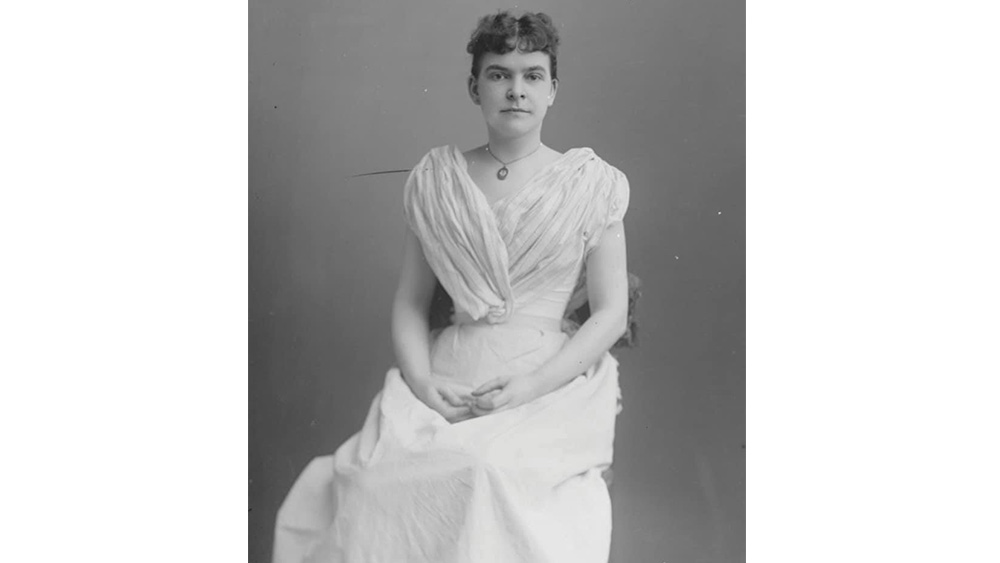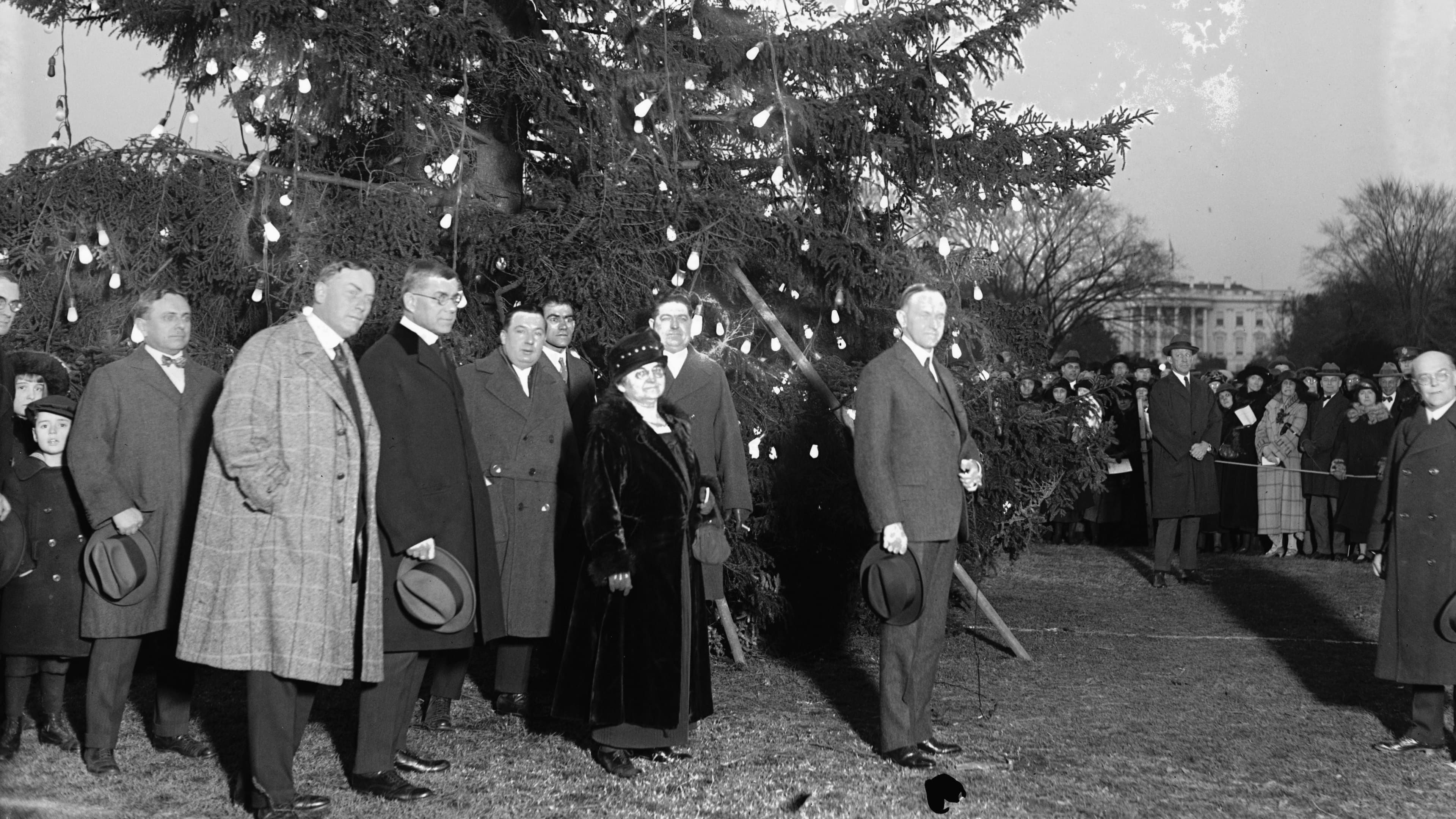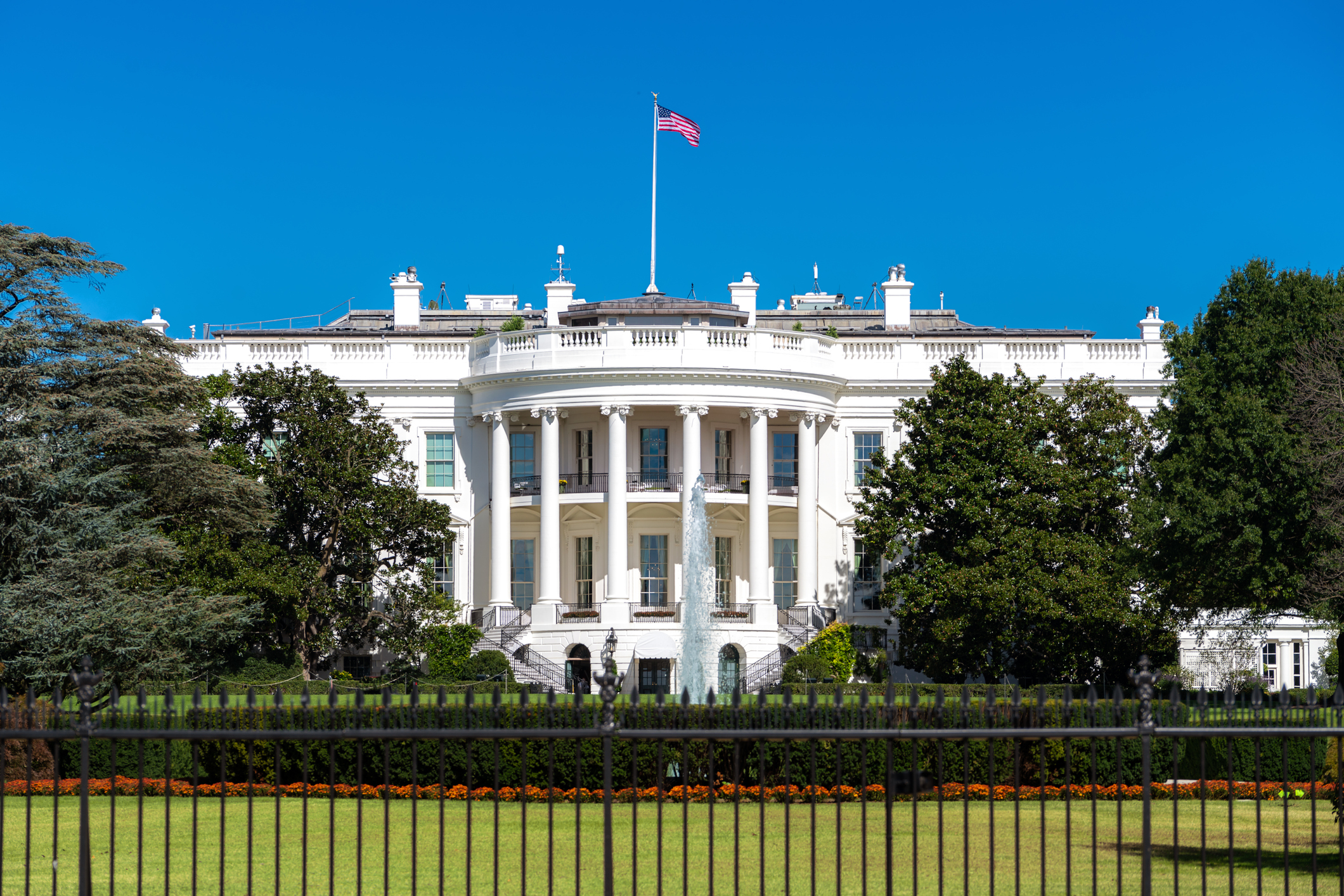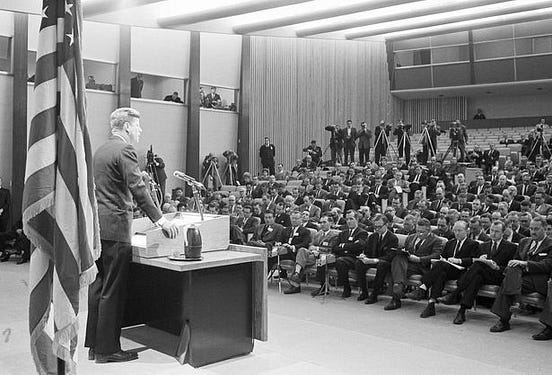
Alice Sanger (1864 – 1941)
President Benjamin Harrison welcomes Alice Sanger as the first
female White House staffer on January 2, 1890.
President Benjamin Harrison (1833 – 1901)


Alice Sanger (1864 – 1941)
President Benjamin Harrison welcomes Alice Sanger as the first
female White House staffer on January 2, 1890.
President Benjamin Harrison (1833 – 1901)


On December 24, 1923, President Calvin Coolidge touched a button
and lights up the first national Christmas tree to grace the White
House grounds.
Not only was this the first White House “community” Christmas
tree, but it was the first to be decorated with electric lights—a
strand of 2,500 red, white and green bulbs.
The balsam fir came from Coolidge’s home state of Vermont and
stood 48 feet tall. Several musical groups performed at the tree-
lighting ceremony.

President Calvin Coolidge and his wife First Lady Grace.
John Adams, the Founding Father whose intellect, passion and
political philosophy fueled American independence and gave
shape to constitutional governments now found around the
world, became the first president to live in the White House on
this day in history, Nov. 1, 1800.
"I pray Heaven to bestow the best of Blessings on this House
and all that shall hereafter inhabit it," Adams wrote to first lady
Abigail, who had yet to arrive, on his second night in the new
executive mansion.
Paintings of former U.S. President John Adams, right, and
his wife Abigail Adams, are displayed at the Massachusetts Historical Society in Boston, Massachusetts.

President John F. Kennedy introduced a new era of White
House communications when he hosted the first live
televised presidential press conference on this day in
history, Jan. 25, 1961.

.jpg)


(1864 – 1941)
President Benjamin Harrison welcomed Alice Sanger as
the first female White House staffer on January 2, 1890.
During an otherwise uneventful presidency remarkable
only for allowing Congress a free-for-all in spending public
funds, Alice Sanger’s appointment may have been an olive
branch to the growing women’s suffrage movement that
had gathered momentum during Harrison’s presidency.

Benjamin Harrison
(August 20, 1833 – March 13, 1901)